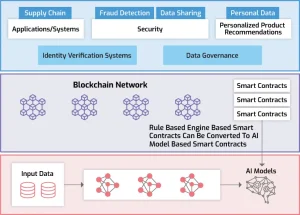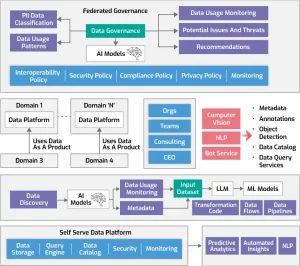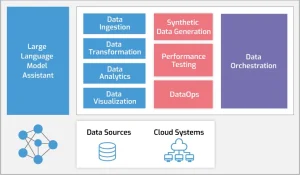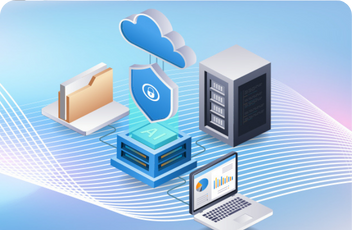This is the second blog of a two-blog series that helps us understand the world of AI and its positive impact after integrating with other emerging technologies. Click here to read our first blog on this topic.
“Can machines think?”, this question dates back to 1950 when Alan Turing, who famously broke the Nazi’s ENIGMA code during WWII, poses it in his paper. He introduces the Turing Test to determine if machines can demonstrate the same intelligence as humans.
Of course, the value of the Turing Test is still debated. But AI has come a long way and continues to evolve. In this second blog, we are analyzing other cutting-edge technologies that can be integrated with AI to bring enormous value to the business.
AI and Blockchain
AI can significantly enhance the efficiency and security of transactions within the realm of Blockchain. Here are some ways where AI can contribute:
- Analyzing the data stored in blockchain while ensuring privacy and security
- Providing predictions and recommendations for Blockchain-based environments
- Detecting fraud in decentralized systems
- Generating predicted data insights using AI models and secure data-sharing within the blockchain
- Optimizing supply chain operations by predicting demand and optimizing delivery teams within the blockchain network
- Offering personalized product recommendations through decentralized identity systems, ensuring individuals retain control over their data
- Analyzing biometric or identity data using AI to verify the identity of systems within the Blockchain network
- Utilizing AI for data insights in rule engines used by smart contracts

Large Language Models in Blockchain
- Empowering Smart Contracts with natural language processing (NLP) capabilities
- Facilitating the translation of Smart Contract policies expressed in plain language into executable code
- Leveraging large language models (LLMs) for content generation on decentralized platforms
- Integrating LLMs with Blockchain to establish secure, private, and user-controlled digital identity solutions with natural language interactions
- Enabling decentralized applications with AI-driven customer support
AI and Data Mesh
AI has the potential to enhance the functionality and security of data mesh networks, improving intelligent data processing, analysis, and data sharing speed and accuracy. Some applications of AI in data mesh include:
- Employing AI in various stages of data mesh, including data discovery, data transformations, data governance, and data quality checks
- Utilizing AI algorithms in conjunction with distributed data processing systems
- Utilizing trained models for specific domains to enhance data processing
- Using generative AI to create data governance policies and guidelines for security control
- Monitoring data usage patterns, tagging personally identifiable information (PII) data, and classifying it using AI models
- Detecting malicious activities within the network and enabling automated responses to security threats
- Leveraging query-based services powered by natural language processing (NLP) for data processing
- Applying computer vision techniques, such as object recognition, in automation factories, smart systems, and the retail and commerce sectors
- Utilizing LLMs, generative AI, and conversational models to auto-generate transformation templates, data pipelines, data flows, and analytics results

Large Language Models Bots in Data Engineering
Generative AI can harness the power of large language models which are created through the utilization of intricate neural network models.

- LLM assistants can generate step-by-step guides based on user inputs, aiding users in applying DataOps or DevOps principles to their teams, processes, and environments. Additionally, they can assist in inspecting and debugging pipelines or orchestration workflows, thereby accelerating the overall debugging process by identifying errors or bottlenecks.
- LLM assistants can generate ingestion templates and pipeline codes that facilitate connectivity to various data sources. These templates can be parameterized to accommodate different source data.
- LLM assistants can generate transformation tasks that involve merging, formatting, and filtering data. They can employ effective prompting GPT tools like ChatGPT to facilitate this process.
- LLM assistants can generate NLP tasks specifically designed for visualization purposes. By responding to queries on business insights, domain models, and business and technical KPIs, they enable effective data visualization.
- Leveraging LLMs, synthetic data can be generated to simulate business rules, conduct load, and performance testing, and perform input and output simulations.
- Fine-tuning data analysis techniques such as sentiment analysis and prediction modeling can be accomplished using LLM models.
- LLM models can be effectively utilized for tasks such as object recognition and image captioning, particularly in the analysis of unstructured data.
Large Language Models in Software Engineering
LLMs play a crucial role in software engineering by facilitating rapid prototyping, enhancing code quality, improving collaboration, and supporting education and training. Some applications of LLMs in software engineering include:
- Generating code snippets, examples, and mockups during the design and simulation phase for rapid prototyping
- Creating content for requirement analysis and design
- Improving code quality during the build phase
- Facilitating collaboration among teams through generated workflows
- Serving as knowledge repositories, aiding content search, generating question and answer responses, and providing prompts for effective education and training
In Conclusion
By harnessing the power of AI, we can enhance the performance of various technologies and foster innovative problem-solving approaches. The integration of AI into quantum computing, metaverse, cybersecurity, blockchain, and data mesh brings forth numerous advancements, including reduced manual intervention, improved operational efficiencies, predictive outcomes, enhanced security measures, and the generation of valuable content and code templates.





